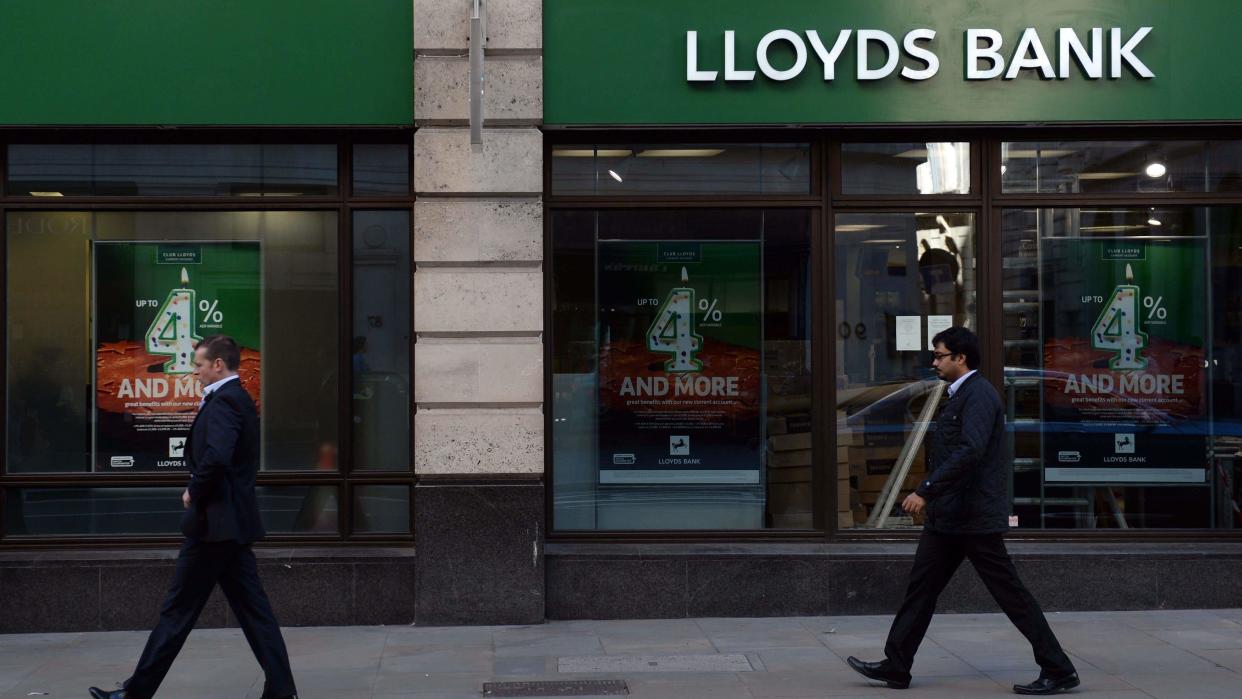Lloyds earnings dip as boost from borrowing costs slows

Lloyds has revealed its earnings dipped this year as the banking giant generated less income despite borrowing costs remaining higher.
The banking group, which also includes Halifax and Bank of Scotland, said it made a pre-tax profit of £3.3 billion in the first six months of the year.
This marks a 14% decline from the £3.9 billion reported this time last year although it is higher than some analysts had predicted.
We’ve published our 2024 H1 #LBGResults, showing a strong performance in line with expectations.
For a full breakdown visit: https://t.co/GuKNBQpPyv#LLOY $LYG pic.twitter.com/aFf3OEIXuH
— Lloyds Banking Group (@LBGplc) July 25, 2024
It came as the group said its net interest income fell by a 10th year on year – the amount it generates from loans minus what it pays out on savings.
Lloyds was among the UK lenders to report bumper profits last year, with its income boosted by higher interest rates which allow banks to charge more for loans.
Nevertheless, the bank also revealed that its balance sheet grew, with the amount it lent to customers jumping by £2.7 billion.
Charlie Nunn, Lloyds chief executive, said the bank was “surprised by how quickly the mortgage market recovered, which gave an indication that people had been waiting for that lower rate environment”.
Mortgage rate cuts towards the start of 2024 prompted more activity in the housing market, especially in January and February, he said.
The boss said said that demand slowed in recent months as mortgage rates edged up again, but that people are still looking to “lock in” mortgage rates for two or five years.
Customer deposits also increased over the period, with an additional £4.9 billion put into savings and current accounts.
Mr Nunn said that individuals and businesses were showing “more resilience” than it had expected, with the number of customers having financial difficulty going down in recent months.
Group CEO, Charlie Nunn reflects on the first half of the year.🔽 pic.twitter.com/DANk3QudlK
— Lloyds Banking Group (@LBGplc) July 25, 2024
Meanwhile, Lloyds is looking to make about £1.2 billion worth of cost savings from changes to its wider strategy, and unlock about £700 million worth of extra income, which it said it is on track to achieve.
Mr Nunn said the bank delivered “robust financial results” in the first half and that 2024 is a “key year for our strategic delivery”.
Furthermore, new economic forecasts provided by the bank show that the UK economy is expected to grow by slightly more than previously thought.
Gross domestic product (GDP) could rise by 0.8% this year, and then 1.2% next year, according to its base case forecasts.
However, the bank is now expecting UK interest rates to be reduced twice this year, having previously forecast three cuts.


